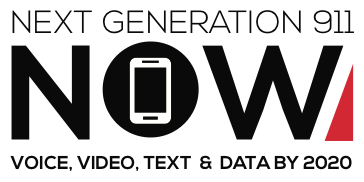Hurricane Laurie, a Category 3 storm, is cutting a swath through Louisiana. At the height of the storm, the 911 center in Richfield Parish is taking the hardest hit. Telephone lines and power lines are down in much of the southern part of the state. Even though the center is fully staffed and its communications systems are still operational, more cellular telephone and Internet messages are coming in than can be handled. Fortunately, the 911 center in the northern part of Louisiana and in Mississippi and Texas can handle the overflow, and can completely take over for the Richfield Parish 911 center if it should be rendered inoperable by the hurricane. Location information arrives with most calls, and even though the call may be received anywhere in a three-state region, the calls can be transferred to the appropriate emergency responder dispatch center. During the height of the storm, response must be triaged. However, emergency management personnel have provided a common, distributed database/GIS that contains and charts each ongoing emergency and its status. Call takers at any answering 911 center put data into the database and can advise callers of evacuation recommendations for the area from which they are calling. Immediate access to the database is invaluable to the public safety agencies throughout the course of any large-scale event. Used during the actual response, identifying routes of travel, evacuation points, and inventory the vendor lists are just a few examples of how having access to “just in time” data will benefit the overall response.
Unfortunately, the Richfield Parish 911 center takes a direct hit from the storm and is completely destroyed. The personnel are able to evacuate to safety in time, but the emergency communications equipment is a total loss. Years earlier, when Hurricane Katrina hit Louisiana, some 911 centers were off-line for almost a week or more. Standards-based IP emergency service networks were subsequently installed in the Gulf Coast states, and intercounty and interstate procedures and protocols were established for emergency and disaster backup operations. As a result, backup 911 centers are able to continue answering inbound 911 calls and routing the information to the correct dispatch centers. This is the exact scenario that was tested during the regional disaster preparedness training session held prior to hurricane season. For a portion of that training day, 911 centers handle the 911 calls for their backup facility. Issues are reported and addressed, and the overall process is refined in preparation for the actual disaster.
Shortly after the storm passes, a temporary trailer is delivered to the parish that contains all the telecommunications and computer equipment to run the emergency communications center until a more permanent solution is rebuilt. Once the trailer is connected to power and the emergency communications internetwork, the 911 center is back up and running, able to answer emergency calls for the parish. The robust, fault-tolerant internetwork and cooperative procedures made all the difference this time.
Inherently, the NG911 system will provide the ability to route and reroute inbound 911 callers to the most appropriate and available 911 center, based on a predefined business process. As a result, there will be an increase in call completion rates (especially in those areas affected by catastrophic events) and call routing and delivery accuracy.
